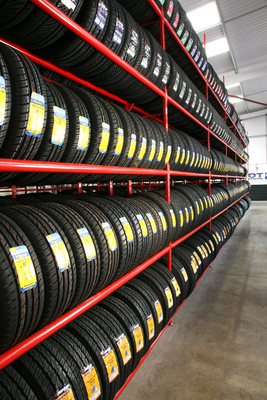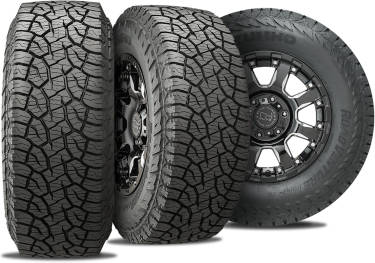All Categories
Featured
Table of Contents
I was able to get 100 hours out of among these tires, and while it had definitely no tire lugs left on it, the soft compound made it work really wellas long as I was utilizing a soft mousse. Kitt Stringer picture Easy installing - 3Wear - 3Sidewall strength - 3Performance on roots - 4Performance on damp rocks - 2Traction on dust - 5Cornering capacity - 4Traction while stopping - 4Self-clearing of dust and mud - 3Performance in mud - 3Overall predictability or monitoring - 3 _ 37 Final thought: This is a good all-around tire with good value for cash.

The wear was regular and I like how much time it lasted and just how constant the feeling was throughout usage. This would also be an excellent tire for faster races as the lug dimension and spacing little bit in well on fast terrain. Kitt Stringer photo Easy installing - 3Wear - 3Sidewall stamina - 3Performance on roots - 4Performance on damp rocks - 4Traction on dirt - 4Cornering capability - 4Traction while stopping - 5Self-clearing of dust and mud - 4Performance in mud - 4Overall predictability or monitoring - 4_42 Final thought: I liked this tire a whole lot.
If I needed to purchase a tire for difficult enduro, this would certainly remain in my leading selection. Easy placing - 3Wear - 3Sidewall toughness - 3Performance on origins - 4Performance on wet rocks - 3Traction on dust - 4Cornering ability - 3Traction while braking - 3Self-clearing of dirt and mud - 4Performance in mud - 4Overall predictability or tracking - 3 _ 34 Conclusion: This tire was really soft and flexible.
All the gummy tires I examined done fairly close for the very first 10 hours or two, with the champions mosting likely to the softer tires that had much better grip on rocks (Tyre inspections). Acquiring a gummy tire will definitely give you a strong advantage over a normal soft substance tire, however you do pay for that benefit with quicker wear
Tyre Fitting
This is an ideal tire for springtime and autumn conditions where the dirt is soft with some wetness still in it. These proven race tires are terrific all around, yet use quickly.
My general winner for a tough enduro tire. If I needed to spend money on a tire for everyday training and riding, I would certainly choose this set.
Leading Tyre Upgrades Near Me
I've been running a collection of Michelin Power Pilot 2CT's on my track Daytona 675 for the previous year. Because time I have done 15 track days in all weather conditions from chilly wet to incredibly hot and these tires have actually never missed out on a beat. Wheel balancing services. I've done nearly 2,000 miles (3,200 kilometres) on them and as you can see from this shot of the front taken after very first session of my 15th track day on them, they still have fairly a great deal of rubber left on them
In other words the 2CT is a fantastic track day tire. If you're the sort of motorcyclist that is likely to run into both damp and dry problems and is starting on track days as I was in 2014, after that I assume you'll be tough pressed to locate a far better worth for money and skilled tire than the 2CT; a set of which will certainly set you back around 185 (US$ 300) in the UK.
Thinking of a much better all rounded road/track tyre than the 2CT need to have been a hard task for Michelin. The outcome of that initiative is the Michelin Pilot Power 3 which essentially changes the Pure. Don't confuse this new tire with the roadway going Pilot Roadway 3 which is not created for track usage (although some riders do).
They inspire significant self-confidence and provide amazing grasp degrees in either the wet or the dry. When the Pilot Power 3 introduced, Michelin suggested it as a 50:50% roadway: track tyre. That message has actually lately transformed since the tyres are now advised as 85:15% road: track usage instead. All the cyclist reports that I have actually read for the tyre price it as a much better tyre than the 2CT in all areas yet particularly in the wet.
Honest Wheel Alignment Near Me (Dianella WA)
Technically there are several differences in between the 2 tires although both use a double compound. Visually you can see that the 2CT has fewer grooves cut into the tyre yet that the grooves go to the edge of the tire. The Pilot Power 3 has even more grooves for better water dispersal yet these grooves do not get to the shoulder of the tyre.
One aspect of the Pilot Power 3 which is different to the 2CT is the brand-new 2CT+ technology which expands the harder middle section under the softer shoulders (on the back tire). This ought to give more stability and minimize any "squirm" when increasing out of edges in spite of the lighter weight and even more versatile nature of this brand-new tyre.

Although I was slightly uncertain about these reduced stress, it ended up that they were fine and the tires carried out actually well on the right track, and the rubber looked far better for it at the end of the day. Just as a point of reference, various other (rapid team) bikers running Metzeler Racetecs were making use of tire pressures around 22-24 psi for the back and 24-27 psi on the front.
Coming up with a much better all round road/track tire than the 2CT need to have been a hard job for Michelin. The outcome of that effort is the Michelin Pilot Power 3 which basically changes the Pure. Do not perplex this new tyre with the roadway going Pilot Roadway 3 which is not created for track usage (although some riders do).
Vehicle Tyres Near Me – Stirling
When the Pilot Power 3 launched, Michelin suggested it as a 50:50% road: track tire. All the motorcyclist reports that I've checked out for the tyre rate it as a far better tire than the 2CT in all areas yet particularly in the damp.

Technically there are plenty of distinctions between both tires also though both make use of a twin compound. Visually you can see that the 2CT has less grooves cut into the tire yet that the grooves go to the edge of the tyre. The Pilot Power 3 has even more grooves for better water dispersal however these grooves don't reach the shoulder of the tyre.
One aspect of the Pilot Power 3 which is different to the 2CT is the new 2CT+ innovation which prolongs the harder middle section under the softer shoulders (on the back tyre). This should provide much more stability and minimize any kind of "wriggle" when increasing out of corners in spite of the lighter weight and more versatile nature of this brand-new tyre.
Although I was slightly uncertain concerning these lower pressures, it transformed out that they were fine and the tires performed truly well on the right track, and the rubber looked far better for it at the end of the day. Equally as a factor of recommendation, various other (quick team) riders running Metzeler Racetecs were using tire stress around 22-24 psi for the rear and 24-27 psi on the front
Latest Posts
Tyre Inspections Near Me (Beechboro WA)
Leading Tyre Installation Near Me – Stirling
Affordable Tyre Fitting Services Near Me